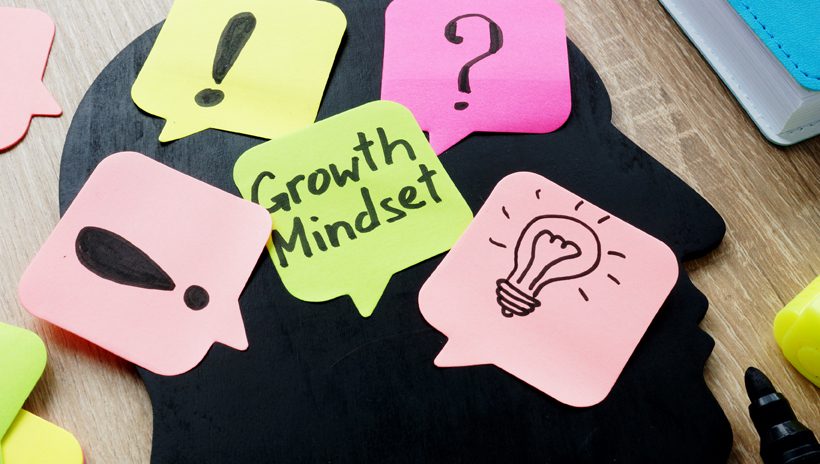Several months ago—back when our pre-pandemic world was generally open for business—I delivered a presentation about social-emotional learning at a statewide conference during which I spoke about how Infobase’s products can be used to support SEL instruction in schools. As I often do, I wanted to open with an appropriate quote, so I found this one online:
Educating the mind without educating the heart is no education at all.
Interestingly enough, there were about an equal number of sources that attributed this quote to Aristotle as those that quite adamantly declared that Aristotle never said such a thing. In the end, it became clear that the “not Aristotle” camp was probably the correct one, and that, in fact, no one knows for certain who actually uttered such an inspiring statement.
This got me thinking about some of the uncertainties that seem to exist regarding social-emotional learning, and has kept me thinking about them ever since the day of that presentation. For one thing, does everyone agree that social-emotional learning is the best thing to happen to education since the very first lesson was ever taught in a school classroom? Taking that question even further, is it even a truly new concept? And regardless of how new or how great it is, can it be done virtually? In this post, I will attempt to offer my thoughts and insights on some of the myths I’ve encountered during my examination of the educational “superfood” known as social-emotional learning. The myths I’ll be addressing are listed below, the last of which is obviously a nod to the current global pandemic and the fact that many schools around the U.S. may not be allowing students to return to a physical classroom at all this fall or will be forging ahead with some degree of virtual instruction.
- Social-emotional learning is a relatively new approach in K–12 education.
- School districts that wish to employ social-emotional learning need to purchase expensive software.
- Everyone agrees that social-emotional learning in the classroom is a good thing.
- Social-emotional learning is difficult and maybe even impossible to do during remote instruction.
What Is Social-Emotional Learning?
Before we get to addressing myth #1, it might be helpful to provide some background information on what social-emotional learning is and how it became such an important part of teaching and learning. According to the Collaborative for Academic, Social, and Emotional Learning (CASEL), social-emotional learning is “…the process through which children and adults understand and manage emotions, set and achieve positive goals, feel and show empathy for others, establish and maintain positive relationships, and make responsible decisions.”

CASEL, the organization that is also credited with defining the concept to begin with, goes on to identify a set of five core SEL competencies: Self-Awareness, Self-Management, Social Awareness, Relationship Skills, and Responsible Decision-Making.1
We don’t have to go into too much detail about any of these to recognize that they’re noble goals for people of any age, even those of us long past our days in a K–12 classroom. But what do they actually look like in a teaching and learning environment? Without dedicating too much space here to the specifics (the CASEL website is a treasure trove of all kinds of SEL-related information), the five competencies can manifest themselves as everything from character education (i.e., lessons about being a good citizen) to mindfulness activities such as yoga and meditation, to entire school staffs working together to foster what’s commonly referred to as a “growth mindset” among students, and to discourage its antithesis, a “fixed mindset.”2 Fun fact: my wife and I play a game every year where we try to count the number of times our son’s middle school principal uses the term “growth mindset” during his back-to-school night speech (usually at least three, in case you’re wondering).
do they actually look like in a teaching and learning environment? Without dedicating too much space here to the specifics (the CASEL website is a treasure trove of all kinds of SEL-related information), the five competencies can manifest themselves as everything from character education (i.e., lessons about being a good citizen) to mindfulness activities such as yoga and meditation, to entire school staffs working together to foster what’s commonly referred to as a “growth mindset” among students, and to discourage its antithesis, a “fixed mindset.”2 Fun fact: my wife and I play a game every year where we try to count the number of times our son’s middle school principal uses the term “growth mindset” during his back-to-school night speech (usually at least three, in case you’re wondering).
…social-emotional learning can include both explicit and implicit instruction woven into every grade and every classroom (or not), may or may not involve software or other technology to assess students and measure progress, and theoretically works best when teachers, administrators, counselors, and support staff all buy in to the benefits SEL can provide.
Generally speaking, social-emotional learning can include both explicit and implicit instruction woven into every grade and every classroom (or not), may or may not involve software or other technology to assess students and measure progress, and theoretically works best when teachers, administrators, counselors, and support staff all buy in to the benefits SEL can provide. With all of this in mind, is it any wonder that myths about social-emotional learning exist, and even persist, despite our having access to a wealth of information about it from so many credible sources? Without having conducted any actual surveys, I would probably attribute much of this to human nature given that we’re willing to go the extra mile to learn about things we’re genuinely interested in, but the vast majority of topics, including social-emotional learning for many of us, don’t fall into that category.
In the interest of fostering a growth mindset among my readers, and also in the interest of educating myself and others as much as possible, let us now dive into some thoughtful consideration of the aforementioned myths surrounding social-emotional learning. I would like to offer the disclaimer here that I won’t really be attempting to definitively confirm or dispel any of the myths we’ll be examining. My goal in writing this article is simply to put the information out there and to offer some general perceptions I’ve uncovered during my research along with my own insights, which may be taken or left, depending on your preference. Above all, I would encourage you to check out some or all of the websites I’ve referenced throughout this article in order to deepen your own knowledge of social-emotional learning in general and also to be able to speak with greater expertise about the myths presented below.
Myth #1: Social-Emotional Learning Is a Relatively New Approach in K–12 Education
I suppose this mostly depends upon your definition of “new.” CASEL first coined the term “social-emotional learning” back in 1994, but many of the concepts it includes have arguably been part of formal K–12 education for decades, if not since the very beginning. Character education, for example, has been a part of reading instruction for nearly two centuries in the form of the McGuffey readers, which were first published in Cincinnati in 1836 and sold millions of copies over the next few decades. Countless numbers of children during that time learned how to become better readers while also learning important moral lessons strategically contained within its pages.3 Outside of any formal textbooks, teachings about morality, overwhelmingly from a biblical perspective, existed even before the very first McGuffey Reader found its way onto a school’s bookshelf or student’s desk.
We can most certainly be forgiven for believing that a given educational concept or approach did not exist before someone gave it a name, but there are countless examples that prove this to be a false notion. Did students not work in groups before someone coined the term “cooperative learning”? Before we all began singing the praises of “project-based learning,” did students not learn about a concept by completing some sort of project, whether it be building a model, making a poster, or delivering a presentation? Of course they did. And of course, social-emotional learning was happening well before 1994. There was no software (and for that matter, few computers in classrooms prior to the 1990s) that assessed students’ social and emotional development, implemented an individualized program, and measured their progress. However, teachers were doing these things on a regular basis, whether it involved recognizing and defusing an incident of bullying, comforting a clearly distraught child who recently lost a pet, or switching gears mid-lesson and allowing students to share their feelings about a tragic school incident or world event—which leads us perfectly into our second social-emotional learning myth.
Myth #2: School Districts That Wish to Employ Social-Emotional Learning Need to Purchase Expensive Software
…a limited or nonexistent budget is not a significant barrier to introducing social-emotional learning to students and teachers.
I had an exceptional manager and valued colleague that left our company more than a year ago to work for one of the major SEL software providers. I’m pretty sure he would somewhat disagree with me on this, but I would like to boldly suggest that social-emotional learning can happen without the need for cash-strapped school districts to purchase some sort of expensive software package in order to improve their students’ social-emotional development. This is in no way an attempt on my part to self-identify as a Luddite and shun modern technology. In fact, my own research has uncovered countless websites (a.k.a., modern technology) offering a multitude of ideas for implementing a fully functioning SEL program without spending a dime on computer software. The point here is simply that a limited or nonexistent budget is not a significant barrier to introducing social-emotional learning to students and teachers.
During the presentation I did last year, I shared some of the many challenges facing administrators who wished to implement a social-emotional learning program in their school or district. Among the most often cited were time, money, lack of teacher training, alignment with the regular academic program, and family engagement. It’s easy to understand how a lack of funds would be a fairly substantial roadblock when it comes to purchasing a full-blown SEL software package, but some of the other concerns also factor into this decision as well, including the amount of time students would spend sitting at a computer as opposed to engaging in genuine interactions with peers. Any teacher who has ever used such computer software in their classroom knows all too well about the challenge of keeping students “honest” in terms of their putting genuine effort into completing the required activities, especially if the teacher is busy working with other students and isn’t actively monitoring them, as is frequently the case.
One also has to assume there will be an investment of time in training teachers to use the new software, which also speaks to the need for teachers to buy into the whole process given the amount of time they’ll spend learning how to use it. According to a 2019 Education Week Research Center survey, only 14% of teachers said they felt “very prepared” or “extremely prepared” to address students’ mental health needs.4 Granted, this was in reference to where they were at the time, in other words, before they received any sort of training on a specific SEL software package or even on social-emotional learning strategies in general, which they probably didn’t learn about in college. This should, however, shed some valuable light on how far school districts would need to go in order to bring teachers up to speed before they can successfully implement a software-based social-emotional learning program.
Myth #3: Everyone Agrees That Social-Emotional Learning in the Classroom Is a Good Thing
\
“Asking if SEL should occur in a classroom is like asking if breathing should happen in the room. The real question is whether or not it should occur in a formal, structured, instructed and assessed manner.”
This one may surprise some people. Surely, no respectable educator, or parent for that matter, would dare to suggest that social-emotional learning isn’t or shouldn’t be an all-important part of classroom instruction. How is that even possible? Well, apparently there are some who hold this view. Peter Greene, a Senior Contributor at Forbes magazine who writes about K–12 policies and practices, eloquently lays out a logical path toward arguing against explicit instruction around social-emotional learning: “We can mostly agree that SEL matters; in fact, we ought to agree that it already happens in classrooms. It’s impossible to avoid; where children are around adults, SEL is going on. Asking if SEL should occur in a classroom is like asking if breathing should happen in the room. The real question is whether or not it should occur in a formal, structured, instructed and assessed manner.”5 The key to his entire argument, therefore, lies in the last sentence, in which he specifically refers to the aspects of social-emotional learning that are often included as part of a formal or structured delivery system.
In a way, his assertion partly refers back to my previous discussion about the need for school districts to purchase expensive software, but it actually goes beyond that to frame any formal attempt to directly teach SEL concepts as a slippery slope due to the subjective nature of some of the applicable virtues. For instance, Mr. Greene cites the problem of teaching tolerance to students whose family may have taught them that certain lifestyles should not be tolerated due to some strictly held religious beliefs, or teaching empathy in light of the fact that certain people or groups may not be deserving of empathy if they are guilty of committing heinous acts. He goes on to challenge other aspects of SEL instruction, including motivation (SEL as a means to becoming a better person or simply to enjoying greater success later in life), methodology (back to the software vs. no software argument), and security (what happens with the results gathered by SEL software?).
By the end of his article, Mr. Greene concedes that the jury is still out when it comes to whether or not social-emotional learning should be taught in some formal, structured way or should simply be allowed to exist organically as part of everyday classroom instruction. There are, however, some cases where social-emotional learning has been actively rejected. This was the case in Idaho recently, when state educators proposed a social-emotional learning program and received plenty of pushback from lawmakers who insisted that such values-based content should be taught at home and not in the schools.6 Some of the concerns raised by lawmakers were similar to the ones posed by Mr. Greene in his article in Forbes, namely what values should be taught (and according to whom), how students would be assessed, and how those results could potentially be shared and used beyond the local school districts. This example, and others like it, should clearly illustrate that direct, explicit instruction around social-emotional learning is not a universally accepted notion.
Myth #4: Social-Emotional Learning Is Difficult and Maybe Even Impossible to Do During Remote Instruction
 Our local school district recently held a virtual school board meeting during which they discussed what the fall semester might look like in terms of things like how much time (if any) students would be spending in school versus engaging in remote learning, whether or not they would be required to wear masks (for now, the answer is yes), along with several other topics. Even at the end of the two-hour-and-forty-plus-minute meeting, many questions were left unanswered or were only partially answered, with a promise to revisit them as the school year draws nearer. This should all sound very familiar to anyone with children who are or will be attending a K–12 school. It should also come as no surprise…as of this writing, most schools are still weeks away from opening for the new school year, and a lot can change in a few weeks. So where does all of this leave social-emotional learning? Can meaningful SEL take place for schools that decide to continue with 100% virtual instruction?
Our local school district recently held a virtual school board meeting during which they discussed what the fall semester might look like in terms of things like how much time (if any) students would be spending in school versus engaging in remote learning, whether or not they would be required to wear masks (for now, the answer is yes), along with several other topics. Even at the end of the two-hour-and-forty-plus-minute meeting, many questions were left unanswered or were only partially answered, with a promise to revisit them as the school year draws nearer. This should all sound very familiar to anyone with children who are or will be attending a K–12 school. It should also come as no surprise…as of this writing, most schools are still weeks away from opening for the new school year, and a lot can change in a few weeks. So where does all of this leave social-emotional learning? Can meaningful SEL take place for schools that decide to continue with 100% virtual instruction?
…there seems to be quite a bit more discussion happening around what a virtual SEL program might look like and whether it exists as a stand-alone program or gets woven into regular curricular instruction, as opposed to debating about whether or not to offer it at all.
Many would no doubt say yes without hesitation, while others might express some degree of apprehension about how effective such an effort can actually be. In fact, there seems to be quite a bit more discussion happening around what a virtual SEL program might look like and whether it exists as a stand-alone program or gets woven into regular curricular instruction, as opposed to debating about whether or not to offer it at all. Marc Brackett, the director of the Center for Emotional Intelligence at Yale University, offers several great suggestions in his interview with Education Week about how social-emotional learning instruction might be accomplished in a virtual setting, beginning with an approach he calls “psychological distancing,” in which a student is encouraged to imagine what he or she might say to a friend who’s feeling anxious about COVID-19 as a way to both help that student learn about the importance of showing compassion for someone else while also devising some strategies they themselves can use but might not think to apply to their own feelings of anxiety.7
The article suggests many other possibilities for adding social-emotional learning elements to regular daily instruction while school buildings are closed to students, including everything from mindfulness activities like simple breathing exercises to more involved activities such as discussing the social-emotional character traits of the characters they’re reading about in a novel. Another great suggestion is to help students cope with the stress of not being in school by  holding a virtual “spirit week” featuring things like Crazy Hat Day and asking students to take photos of themselves and share them with the class. In a recent blog post, Garima Srivastava, an IB teacher at Pathways School Noida in India, goes even further and suggests that SEL should be a separate course of instruction for both students and teachers: “It is essential for schools and leadership to make SEL a separate subject to be taught to children and a separate rigorous training module to be imparted to teachers.”8 In either approach, it’s safe to assume that social-emotional learning can, and perhaps even should, be included to some degree during virtual instruction.
holding a virtual “spirit week” featuring things like Crazy Hat Day and asking students to take photos of themselves and share them with the class. In a recent blog post, Garima Srivastava, an IB teacher at Pathways School Noida in India, goes even further and suggests that SEL should be a separate course of instruction for both students and teachers: “It is essential for schools and leadership to make SEL a separate subject to be taught to children and a separate rigorous training module to be imparted to teachers.”8 In either approach, it’s safe to assume that social-emotional learning can, and perhaps even should, be included to some degree during virtual instruction.
Thinking back to my presentation last year, I concluded by sharing some information about how Infobase’s online resources can be used to support teachers’
efforts to incorporate social-emotional learning into their everyday teaching. While I wasn’t focusing specifically on virtual instruction, the same suggestions
would certainly apply here and, in fact, can easily be expanded to include whatever research databases or streaming video platforms your school or district  currently subscribes to. Many general reference databases (including our two World Almanac® for Kids databases for elementary and intermediate levels)
currently subscribes to. Many general reference databases (including our two World Almanac® for Kids databases for elementary and intermediate levels)
include content covering topics such as being a good citizen, resolving conflicts, managing emotions, treating others with respect, and many other topics that can be applied at home and in life as well as in school. Likewise, our health database (and probably most others out there) offers a plethora of content regarding mental health, anxiety, depression, stress management, and other important topics relevant to children and teens. Finally, check your streaming video subscription(s) for videos on many of these subjects, along with empathy, goal-setting, and many other topics relevant to social-emotional learning.
Conclusion
 As I close, I would like to put on my teacher hat for just a second and pose some thought-provoking questions: Do you think this article has thoroughly dispelled any or all of the aforementioned myths regarding social-emotional learning? Are there other myths that you’ve run across about SEL that were not addressed here? Regardless of your responses, my hope is that you’ve been encouraged to think a bit more deeply about social-emotional learning and to consider not only the many different forms it can take but also how it can be applied most seamlessly and effectively in your particular teaching and learning environment this fall, whether it be a single school classroom or a bunch of kitchens, living rooms, and dining rooms. As we once again consider the wise words probably not spoken by Aristotle, Educating the mind without educating the heart is no education at all, let us pledge to do both to the best of our ability in order to ensure that future generations are empowered to make the world an even better place to live.
As I close, I would like to put on my teacher hat for just a second and pose some thought-provoking questions: Do you think this article has thoroughly dispelled any or all of the aforementioned myths regarding social-emotional learning? Are there other myths that you’ve run across about SEL that were not addressed here? Regardless of your responses, my hope is that you’ve been encouraged to think a bit more deeply about social-emotional learning and to consider not only the many different forms it can take but also how it can be applied most seamlessly and effectively in your particular teaching and learning environment this fall, whether it be a single school classroom or a bunch of kitchens, living rooms, and dining rooms. As we once again consider the wise words probably not spoken by Aristotle, Educating the mind without educating the heart is no education at all, let us pledge to do both to the best of our ability in order to ensure that future generations are empowered to make the world an even better place to live.
See also:
- Register for our FREE six-part workshop, which starts Thursday, August 20, 2020, at 3:00 p.m. ET: SEL & Beyond: A Dynamic Introduction to Social and Emotional Learning and Its Core Competencies
- Trending Professional Development Topics in Our New Reality
- NEW Professional Development and Training Platform, Including Content and Courses
References:
1. https://casel.org/what-is-sel/
2. https://www.mindsetworks.com/science/


